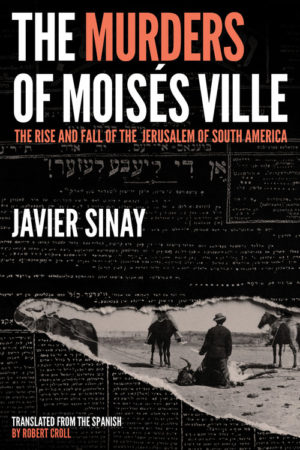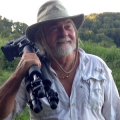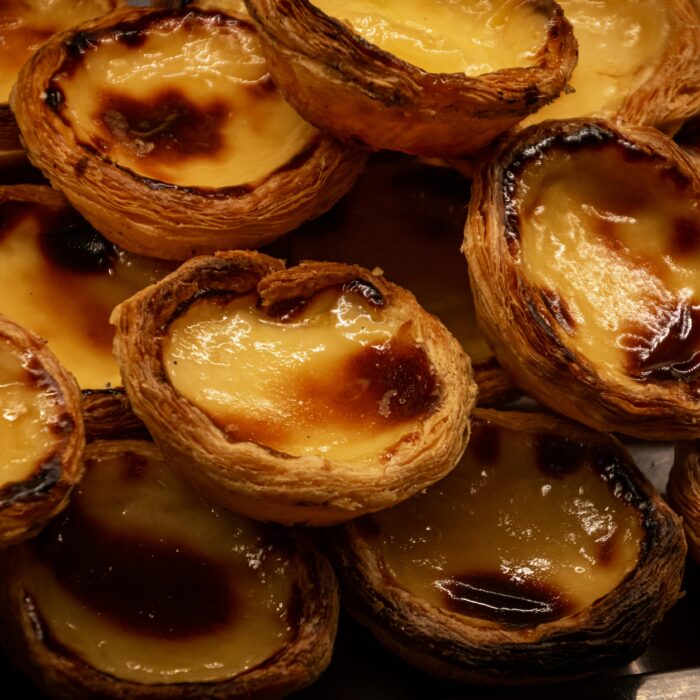You have no items in your cart. Want to get some nice things?
Go shopping
On the evening of July 9 2009, the Buenos Aires-based writer and journalist Javier Sinay received an email from his father Horacio. With the brief message was an online link to “The First Fatal Victims in Moisés Ville,” a 1947 article written by Sinay’s great-grandfather, Mijl Hacohen Sinay. “…apart from everything it means for us emotionally and historically,” his father wrote, “there’s a touch of a crime report about it.”
Sinay was intrigued. The article reported that several of the first Jewish residents of Moisés Ville were murdered. “Within the article, twenty-two homicides occur one after the other,” he writes, “but not everything that might be said about them is contained there….” However, there is enough said to intrigue the journalist in Sinay to want to learn more about his great-grandfather and the murders he described. A further search online that evening revealed that in 1894, 17-year-old Mijl Hacohen Sinay arrived in Argentina from Europe with his family and settled in Moisés Ville, located in Santa Fe province. When he was 21-years-old, he moved to Buenos Aires where he published Der Viderkol, the first Yiddish-language newspaper in Argentina. He continued to write for numerous publications until his death in 1958.
“It’s no common thing to discover, four generations back, a figure who seems so close,” Sinay writes. “The matter digs into me like a thorn, keeps me up at night: if I found this much with so little, it’s because more is out there.” And so, driven by his desire to learn more about his great-grandfather and the twenty-two murdered Jewish immigrants like him who left Europe to start a new life in Argentina, Sinay journeyed to Moisés Ville – not only as a descendant in search of his family’s past, but as a seasoned journalist investigating a series of murders.
The Murders of Moisés Ville: The Rise and Fall of the Jerusalem of South America is Sinay’s meticulously written account of his personal journey to uncover his past, and the mysteries surrounding the murders – a project not without formidable challenges. More than a century had passed, and most of the surviving recorded history was written in Yiddish, a language he did not know. The book can be best described as a story about a story about a story, in which truth and myth often converge.
The first stop on Sinay’s journey is the Buenos Aires Jewish Museum. It is there that he discovers a miniature replica of the steamship Weser, which made cross-Atlantic voyages from Europe to America beginning in 1867, its passengers mostly Jewish immigrants from Russia, including Moisés Ville’s founding fathers, as well as its future victims. Sinay’s precise description of the steamship Weser sets the tone for the rest of the book, which is filled with facts and figures: “Weighing 2,870 tons and measuring 99.05 meters long by 12.19 wide, the ship traveled at a speed of 11 knots, with two masts for sails and a single smokestack. It carried 60 passengers in first class, 120 in second, 700 in the hold, and a crew comprising a hundred-odd sailors.” Such minute detail is included in each chapter – everything is important to the journalist in Sinay. Given the often ambiguous nature of his research, recording solid, undisputed facts may have anchored him during the painstaking course of an evolving and increasingly complex cold case investigation.
It is early morning when Sinay arrives in Moisés Ville for the first time. Although he is exhausted after traveling a day and a half by train and bus to get there, he sets out immediately to explore. What he finds is a town that is struggling to survive, with the signs of a century of wear evident in its empty buildings and overgrown streets. At the end of his first day, Sinay writes: “More than one hundred twenty years later, the dust has turned to dust. And when I tell a few of the neighbors why I have come – and what it is I want to know – they wrinkle their noses at the nasty smell of the word ‘crime’.”
The first half of The Murders of Moisés Ville reads like a journalist’s notebook. With every murder clue he uncovers, Sinay provides the necessary historic background to make each discovery relevant. The narrative works to inform readers and draw them into his pursuit of the truth, and ultimately, to share his frustration that not all is as it seems at first glance. “That’s why this investigation into such a distant series of murders is keeping me awake” he writes. “On the route traced by my great-grandfather, the colonists’ luck is abysmal: they fall victim to bandits who rob them, assault the women, slit the children’s throats, and finish by killing them off one and all…That’s twenty-two good reasons right there to doubt the official version of Argentinian history, the one that tells a story of happy immigrants arriving from all four points of the compass.”
But the truth, Sinay discovers, depends upon who it is that is telling the story. At each juncture of his journey, he opens one door to find a room full of other doors, each leading to a slightly different version of history. “It’s no simple task” he writes, “to approach a series of murders of which all that remains are the oral accounts of the victims’ descendants; my great-grandfather’s text, dramatically cut through by its time; and scattered, infrequent articles in a few periodicals.”
In the end, Javier Sinay learns everything there is to know about his great-grandfather and the twenty-two murders of Moisés Ville. He has faithfully recorded every story and all the myths surrounding them, yet he questions whether it will ever matter to anyone but himself. He finds the answer when he meets Professor Ester Szwarc, who spent five months with a small army of volunteers rescuing thousands of books and documents after a 1994 terrorists bomb severely damaged the Asociación Mutual Israelita Argentina (AIMA) library in Buenos Aires. Many of the texts that Sinay would subsequently reference for his own book were saved from potential oblivion – each damaged manuscript and soiled document dried out page by page. When he asks, Szwarc tells Sinay why she felt it was her duty to preserve the library: “I am the product of all before,” she says, “where each link has left something for the next. As no one can be the master of truth, I must pass on the greatest amount of information possible, all I’ve received and more, and the one who receives it will decide what position to adopt.”
Because Sinay knew no Yiddish, he attended Yiddish language classes to help him translate the original texts. He also provides something of a tribute and a memorial for the ancient language: “To take up the issue of the linguistic distance that separates me from my great-grandfather (and distances me from the crimes of Moisés Ville) is also a way to consider a language that today has more history, literature, and academic prestige than it has speakers.”
There is much more to Javier Sinay’s first book in English than an account of century old crimes. “The murders bear upon my history as well,” he writes, “the responsibility of redeeming the dead, of bringing them up from their eroding gravestones, is now mine.” In the pursuit to understand his own past, while unraveling the mysteries surrounding Moisés Ville, Javier Sinay has created an unflinching portrait of the first Jewish community in Argentina, who, despite enormous challenges, life-threatening privations, and demeaning persecution, endured to pave the way for others seeking a new life in Argentina. In its own way, Sinay’s story is a dramatic reminder that, for millions of people fleeing their homelands today for a better life elsewhere, little has changed. Finally, Sinay has demonstrated once again, that history must be preserved no matter the cost – for ourselves, as well as for future generations. “…we are scarcely more than its custodians for a time,” he writes, “… (and) its legacy is a moral obligation.” The key word for the process, he believes, is Transmission
By Javier Sinay
Translated from the Spanish by Robert Croll
Restless Book, 288 pages

Stephen Newton
Stephen Newton is a writer based in Southern Appalachia. His most recent fiction is featured in Two Sisters, Drunk Monkeys, Cagibi, The Ice Colony, The Write Launch, and Litro. Newton has also produced, written and directed two award-winning feature length documentaries: "Outcasts: Surviving the Culture of Rejection" and "One Night in January: Counting the Cost of Homelessness". He is currently at work on a novel set in the 1970s and a short story collection. For more information, visit stephenanewton.com
- Web |
- YouTube |
- More Posts(3)




